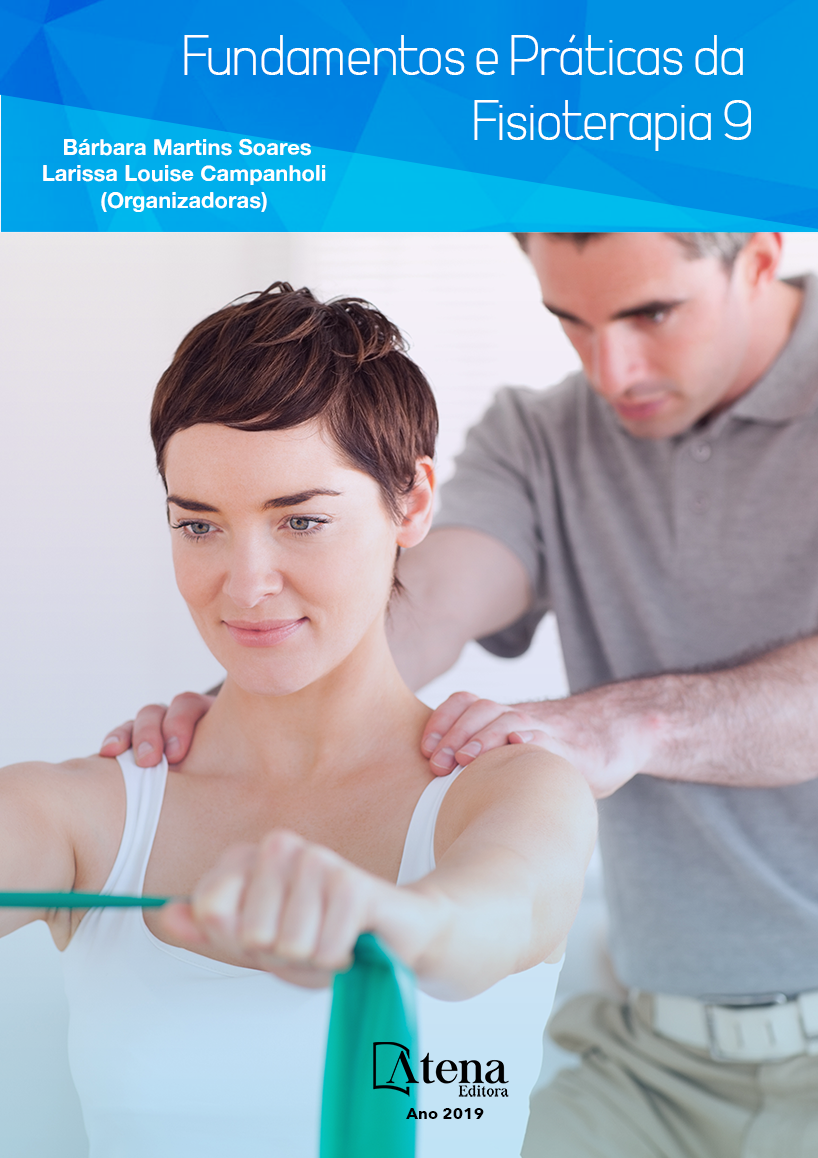
EXERCÍCIOS ABDOMINAIS MODIFICADOS NA REDUÇÃO DA DIÁSTASE DOS MÚSCULOS RETO ABDOMINAIS NO PUERPÉRIO IMEDIATO DE PARTO TRANSVAGINAL
Introdução: Durante o período
gestacional ocorre o afastamento do músculo
reto abdominal, o que é denominado diástase.
Ela ocorre para que seja possível o crescimento
uterino durante a gravidez. Tem maior incidência
no terceiro trimestre e no pós-parto imediato, e
é considerada patológica se ultrapassar 3 cm.
Objetivo: Verificar se a utilização de exercícios
abdominais modificados favorece a redução
precoce da diástase dos retos abdominais.
Metodologia: Estudo interventivo, longitudinal,
transversal, realizado na maternidade São
Raphael, na cidade de Maceió - AL, com 30
mulheres, de 18 a 35 anos, de qualquer paridade
e em puerpério imediato, que tivessem sido
submetidas a partos transvaginais e excluindose
as com problema cardiopulmonar pregresso
ou atual, impossibilidade de realizar os testes ou
que se encontrassem em estado hipertensivo
agudo. Foi realizada a aferição da diástase
dos músculos reto abdominais e da flacidez
abdominal. Após a coleta de dados, as mulheres
foram submetidas a uma série de exercícios
abdominais modificados e reavaliadas 4 horas
após a intervenção. Resultados: As mulheres
eram jovens de 21 a 30 anos (53,3 %), solteiras
(66,6%) e multíparas (36,66 %) multiparas. 100
% das participantes apresentaram DRMA supra
umbilical. 46,6 % das voluntárias apresentaram
flacidez abdominal e após a intervenção
mulheres multíparas apresentaram menores
reduções da diástase. Considerações
finais: pôde-se perceber que a intervenção
fisioterapêutica precoce no pós-parto imediato
é eficaz para a redução da diástase do músculo
reto abdominal, o que confirma a importância
da intervenção fisioterapêutica que atuam no
puerpério imediato.
EXERCÍCIOS ABDOMINAIS MODIFICADOS NA REDUÇÃO DA DIÁSTASE DOS MÚSCULOS RETO ABDOMINAIS NO PUERPÉRIO IMEDIATO DE PARTO TRANSVAGINAL
-
DOI: 10.22533/at.ed.56519070312
-
Palavras-chave: Período pós-parto. Parto normal. Diástase muscular.
-
Keywords: Postpartum period. Normal birth. Diastasis muscle
-
Abstract:
Introducion: During the
gestational period the rectus abdominis muscle
is removed, which is called diastasis. It occurs
so that uterine growth is possible during
pregnancy. It has a higher incidence in the third
trimester and in the immediate postpartum,
and is considered pathological if it exceeds 3
cm. Objective: To verify if the use of modified
abdominal exercises favors the early reduction
of the diastasis of the abdominal challenges.
Methodology: Interventional, longitudinal,
transverse study performed at the São Raphael
maternity hospital in the city of Maceió, Brazil,
with 30 women, 18 to 35 years old, of any
parity and in an immediate puerperium who had
undergone transvaginal deliveries, those with pre-existing or current cardiopulmonary
problems, the impossibility of performing the tests or who were in an acute hypertensive
state. The diastasis of the rectus abdominis muscles and the abdominal flaccidity
were measured. After data collection, the women underwent a series of modified and
reassessed abdominal exercises 4 hours after the intervention. Results: Women were
21 to 30 years old (53.3%), single (66.6%) and multiparous (36.66%) multiparous
women. 100% of the participants presented supra umbilical DRMA. 46.6% of the
volunteers presented abdominal flaccidity and after the intervention multiparous
women had lower diastatic reductions. Final considerations: it was noticed that the
early physiotherapeutic intervention in the immediate postpartum is effective for the
reduction of diastasis of the rectus abdominis muscle, which confirms the importance
of the physiotherapeutic intervention that works in the immediate puerperium.
-
Número de páginas: 15
- EVILMA NUNES DE ARAUJO SANTOS
- JEAN CHARLES DA SILVA SANTOS
- Evilma Nunes de Araujo


